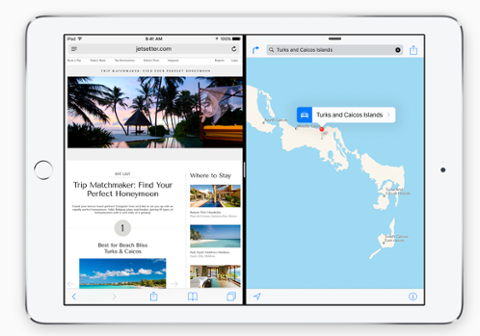
With
anticipation for the iPhone 5 and the iPad Mini running hot and heavy today and perhaps 1.5 million pre-orders queuing up, another Apple home run will increase demand for iOS developers. According to one Silicon Valley-based IT recruiter, the rush is already well underway. “When word comes that Apple is going to release a new version of iOS, we see a spike in demand. Apple released the developer version of the software update iOS 6 back in June so companies could test the compatibility of their current applications with the new software,” says David Chie, Chief Operating Officer at Palo Alto Staffing. “At that point they hired resources for the update.” According to an analysis of Dice job postings, Chie’s observation is correct. iOS-related job listings have virtually doubled since the beginning of the year, with a 16.2 percent increase from May to June alone. That increase marked the largest percentage month-to-month gain in the past eight months, which should come as no surprise given Apple released its iOS 6 SDK on June 11. “This type of role is in very high demand,” says David Knapp, San Francisco Metro Market Manager of IT recruiter Robert Half Technology. “The challenge is that talent pool is very shallow. As the demand picks up, our clients are having trouble filling these developer positions.” Here's what a few iOS developers and employers have to say about the wooing: [youtube http://www.youtube.com/watch?v=S71ekNfCfgw&w=560&h=315
&wmode=window&h=315] With more than half a million iOS apps already available in the App Store, which will likely need to get upgraded, we’ll soon see an even larger demand for iOS developers. “We expect to continue to see the strong demand for iOS developers. The rate of user demand for mobile apps is increasing at a huge rate,” says Chie. “We’re still receiving a consistently high number of requests for both iOS and Android developers.” Right now, he says, the split is 85 percent for iOS and Android developers combined and 15 percent for “other.”
Beyond iOS and Android
Chie expects the “other” category to expand in the coming years. For example, Chie notes an increase for developers with experience with frameworks like the HTML5-based Sencha Touch or Adobe's PhoneGap, which allow mobile apps to be compatible with multiple mobile platforms. “That‘s because companies want to reduce the maintenance cost of applications in situations just like this update,” he says. In Chie’s view, new features in new mobile hardware will always drive the need for new software and the developers to write it. “The release of the new products creates new opportunities for companies to either expand features or develop new apps.” It all depends on what these increasingly feature-rich gadgets are capable of doing. How can developers coming to this market from different areas (Web application development, for example) take advantage of the new opportunities? “Look into training, and invest in yourself to pick up the technologies,” says Knapp. “Look for opportunities to get your foot in the door to learn these new skills because they’re only going to help you in the future.”
 With anticipation for the iPhone 5 and the iPad Mini running hot and heavy today and perhaps 1.5 million pre-orders queuing up, another Apple home run will increase demand for iOS developers. According to one Silicon Valley-based IT recruiter, the rush is already well underway. “When word comes that Apple is going to release a new version of iOS, we see a spike in demand. Apple released the developer version of the software update iOS 6 back in June so companies could test the compatibility of their current applications with the new software,” says David Chie, Chief Operating Officer at Palo Alto Staffing. “At that point they hired resources for the update.” According to an analysis of Dice job postings, Chie’s observation is correct. iOS-related job listings have virtually doubled since the beginning of the year, with a 16.2 percent increase from May to June alone. That increase marked the largest percentage month-to-month gain in the past eight months, which should come as no surprise given Apple released its iOS 6 SDK on June 11. “This type of role is in very high demand,” says David Knapp, San Francisco Metro Market Manager of IT recruiter Robert Half Technology. “The challenge is that talent pool is very shallow. As the demand picks up, our clients are having trouble filling these developer positions.” Here's what a few iOS developers and employers have to say about the wooing: [youtube http://www.youtube.com/watch?v=S71ekNfCfgw&w=560&h=315&wmode=window&h=315] With more than half a million iOS apps already available in the App Store, which will likely need to get upgraded, we’ll soon see an even larger demand for iOS developers. “We expect to continue to see the strong demand for iOS developers. The rate of user demand for mobile apps is increasing at a huge rate,” says Chie. “We’re still receiving a consistently high number of requests for both iOS and Android developers.” Right now, he says, the split is 85 percent for iOS and Android developers combined and 15 percent for “other.”
With anticipation for the iPhone 5 and the iPad Mini running hot and heavy today and perhaps 1.5 million pre-orders queuing up, another Apple home run will increase demand for iOS developers. According to one Silicon Valley-based IT recruiter, the rush is already well underway. “When word comes that Apple is going to release a new version of iOS, we see a spike in demand. Apple released the developer version of the software update iOS 6 back in June so companies could test the compatibility of their current applications with the new software,” says David Chie, Chief Operating Officer at Palo Alto Staffing. “At that point they hired resources for the update.” According to an analysis of Dice job postings, Chie’s observation is correct. iOS-related job listings have virtually doubled since the beginning of the year, with a 16.2 percent increase from May to June alone. That increase marked the largest percentage month-to-month gain in the past eight months, which should come as no surprise given Apple released its iOS 6 SDK on June 11. “This type of role is in very high demand,” says David Knapp, San Francisco Metro Market Manager of IT recruiter Robert Half Technology. “The challenge is that talent pool is very shallow. As the demand picks up, our clients are having trouble filling these developer positions.” Here's what a few iOS developers and employers have to say about the wooing: [youtube http://www.youtube.com/watch?v=S71ekNfCfgw&w=560&h=315&wmode=window&h=315] With more than half a million iOS apps already available in the App Store, which will likely need to get upgraded, we’ll soon see an even larger demand for iOS developers. “We expect to continue to see the strong demand for iOS developers. The rate of user demand for mobile apps is increasing at a huge rate,” says Chie. “We’re still receiving a consistently high number of requests for both iOS and Android developers.” Right now, he says, the split is 85 percent for iOS and Android developers combined and 15 percent for “other.”
 With anticipation for the iPhone 5 and the iPad Mini running hot and heavy today and perhaps 1.5 million pre-orders queuing up, another Apple home run will increase demand for iOS developers. According to one Silicon Valley-based IT recruiter, the rush is already well underway. “When word comes that Apple is going to release a new version of iOS, we see a spike in demand. Apple released the developer version of the software update iOS 6 back in June so companies could test the compatibility of their current applications with the new software,” says David Chie, Chief Operating Officer at Palo Alto Staffing. “At that point they hired resources for the update.” According to an analysis of Dice job postings, Chie’s observation is correct. iOS-related job listings have virtually doubled since the beginning of the year, with a 16.2 percent increase from May to June alone. That increase marked the largest percentage month-to-month gain in the past eight months, which should come as no surprise given Apple released its iOS 6 SDK on June 11. “This type of role is in very high demand,” says David Knapp, San Francisco Metro Market Manager of IT recruiter Robert Half Technology. “The challenge is that talent pool is very shallow. As the demand picks up, our clients are having trouble filling these developer positions.” Here's what a few iOS developers and employers have to say about the wooing: [youtube http://www.youtube.com/watch?v=S71ekNfCfgw&w=560&h=315&wmode=window&h=315] With more than half a million iOS apps already available in the App Store, which will likely need to get upgraded, we’ll soon see an even larger demand for iOS developers. “We expect to continue to see the strong demand for iOS developers. The rate of user demand for mobile apps is increasing at a huge rate,” says Chie. “We’re still receiving a consistently high number of requests for both iOS and Android developers.” Right now, he says, the split is 85 percent for iOS and Android developers combined and 15 percent for “other.”
With anticipation for the iPhone 5 and the iPad Mini running hot and heavy today and perhaps 1.5 million pre-orders queuing up, another Apple home run will increase demand for iOS developers. According to one Silicon Valley-based IT recruiter, the rush is already well underway. “When word comes that Apple is going to release a new version of iOS, we see a spike in demand. Apple released the developer version of the software update iOS 6 back in June so companies could test the compatibility of their current applications with the new software,” says David Chie, Chief Operating Officer at Palo Alto Staffing. “At that point they hired resources for the update.” According to an analysis of Dice job postings, Chie’s observation is correct. iOS-related job listings have virtually doubled since the beginning of the year, with a 16.2 percent increase from May to June alone. That increase marked the largest percentage month-to-month gain in the past eight months, which should come as no surprise given Apple released its iOS 6 SDK on June 11. “This type of role is in very high demand,” says David Knapp, San Francisco Metro Market Manager of IT recruiter Robert Half Technology. “The challenge is that talent pool is very shallow. As the demand picks up, our clients are having trouble filling these developer positions.” Here's what a few iOS developers and employers have to say about the wooing: [youtube http://www.youtube.com/watch?v=S71ekNfCfgw&w=560&h=315&wmode=window&h=315] With more than half a million iOS apps already available in the App Store, which will likely need to get upgraded, we’ll soon see an even larger demand for iOS developers. “We expect to continue to see the strong demand for iOS developers. The rate of user demand for mobile apps is increasing at a huge rate,” says Chie. “We’re still receiving a consistently high number of requests for both iOS and Android developers.” Right now, he says, the split is 85 percent for iOS and Android developers combined and 15 percent for “other.”



